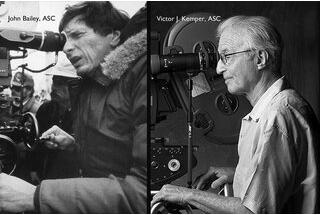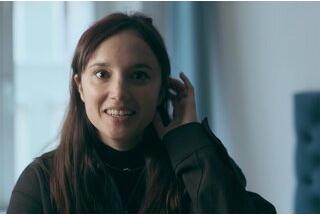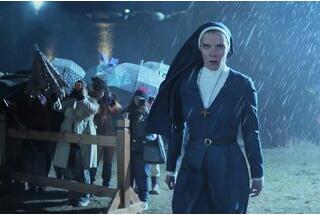Judith Kaufmann, BVK, discusses the technical and aesthetic choices made on "Corsage", by Marie Kreutzer
As Tears Go ByChristmas 1877, Elisabeth of Austria (Sissi), is celebrating her 40th birthday. As first lady of Austria and wife of Emperor Franz-Joseph I, she has no right to express herself and must forever remain the beautiful and young empress. To meet these expectations, she adheres to a rigorous regimen of fasting, exercise, hair styling and daily height measurement. Suffocated by convention, and thirsty for knowledge and life, Elisabeth begins to grow increasingly rebellious against her public image.
What are the images that came to you when reading the screenplay?
Judith Kaufmann: What I found very interesting was the very different approach taken to the character. If we take the opening of the film as an example, with the shot where Vicky Krieps (Sissi) is holding her breath while immersing herself in her bath while her servants time the performance, this is the kind of scene that one absolutely wasn’t expecting when you’re told you’re going to film the story of the Empress of Austria. Later, we discover her on horseback, or running, swimming, jumping in the air before a period camera’s lens, or fencing... all these scenes gave a lot of presence to the Empress and her need to move on screen. This perpetual movement is felt throughout the film, and, to me, it is a kind of narrative thread in Corsage.
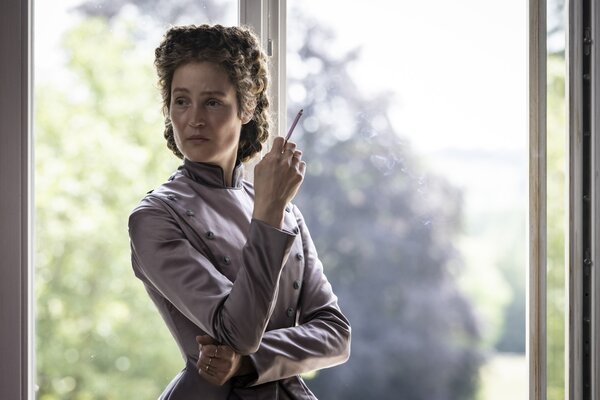
Is Corsage a historical recreation filmed in a modern way?
JK: We wanted, of course, the film to both to be in the period but also to be timeless in a way. We wanted to create on screen this feeling of following her in her daily life, with a camera close to her, but we never thought about ensuring modernity on screen at any cost. Shooting on 35mm was always a prerequisite of the director from the start. This choice was neither faddish nor a gesture of opposition against the current prevalence digital cinematography, but above all because of the richness of skin tones and the depth of colors that we both love on film. The kind of softness that appears in the grain, and the greater latitude of exposure in high lights… I can’t qualify all of that as either traditional or modern. It’s simply something that it is hard to find in digital and that we both felt was of the greatest importance.
Is it increasingly rare for a project to be deliberately written for film?
JK: I’ll admit that I am very lucky to have come across a director with such conviction and who is ready to defend her choices from the start. You have to be supported in this kind of situation, because everyone knows that shooting in film nowadays, with its fewer takes, a much lower exposure (400 ISO at best on Corsage) and the absence of a live result, implies a truly profound change in on-set habits. Everyone is, de facto, much more concentrated, whether that be the technicians or the actors, when we hear the film rolling... There’s a kind of excitement there related to the unpredictable nature of film, with its well-known risks, camera hairs, blurs or the legendary underexposure that we have all experienced at one time or another in our film career. I would say that we work in greater tension... that’s for sure.
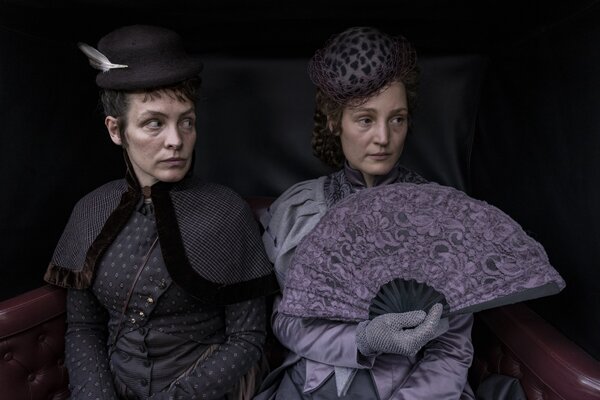
Where and when did you shoot?
JK: Filming took place in two parts to take advantage of the seasons and reflect the passage of time in the story. We started filming in Austria, between winter and spring 2021, and resumed that summer in Luxembourg, France and Italy for the conclusion. Thirty-six days of filming in all, with a dizzying number of different locations. Several castles figure amongst the most emblematic locations in the film. Filming there was highly regulated, and it was often very difficult to obtain the necessary permits to do anything from a technical standpoint.
There are links with the film Spencer, by Pablo Larrain, which portrays Princess Diana... it’s undeniable!
JK: Yes, by chance, Spencer and Corsage happen to have been co-produced by the same German company. When I started to prepare for the film, I took it upon myself to phone Claire Mathon who was also scouting in castles around Berlin. We realized that we had a lot of things in common, whether it was a princess as the main character, 35mm film, castles, or the huge contribution of the MHD department!
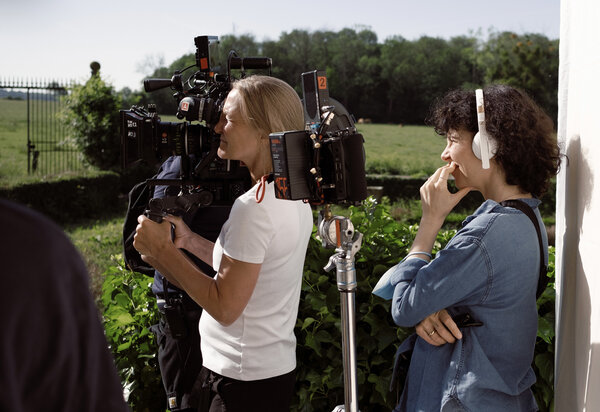
How does the director work on set?
JK: Marie doesn’t do rehearsals. She doesn’t like blocking for the actors and allows them complete freedom in front of the camera. As for me, I never really know what’s going to happen through the viewfinder and, as Vicky was always the last to arrive on set, it was a challenge to anticipate each situation. From this point of view, the technology provided by LEDs is a blessing. You can instantly adapt to a particular position and optimize every moment, especially when you are working with an actress like her who is used to offering different things with each take. To be creative in the moment, to be spontaneous, is the nature of HF lighting control, and one that was truly unavailable even a decade ago.
From an artistic direction standpoint, Marie Kreutzer had warned me that she did not want to use candlelight. Mainly because it seemed too romantic and cozy for interiors. She didn’t want to add this sort of warm touch to the film, which she imagined in fairly cold tones, like in the Hofburg where the character of Sissi never really seems at home. Instead of candles, we sometimes opted for prop electric lamps, taking a certain liberty with historical authenticity. In fact, electric lighting had already started at that time but not, it must be admitted, with the kind of lamps that Marie deliberately placed in the field. The historical liberties the film takes in this regard are, to me, a kind of mise-en-abyme of current questions surrounding femininity, and namely the constraints around appearance. Why, indeed, ought we to show ourselves as we are? These anachronistic choices in the lamps or on many other prop elements (certain wallpapers, the Rolling Stones played on the harp, or simply the obvious absence of royal furniture on screen) are a way for me to say in subtext “let me do what I want with my work!”
What light sources did you mainly work with?
JK: My kit on this film relied on Astera tubes, Litemats, and SkyPanels. Nothing very original there! These are all highly polyvalent sources, which are often lightweight and easy to install. For the daylight entering the sets, I used 18kW HMI indirect lighting, and the Hofburg Castle remained as dark as possible with the curtains drawn, almost like a prison. For the dinner scenes, we also used Rodlights showering the actors from above as our main source. In the other castles, sunlight was often more present, depending on the scene, with even sometimes real sunlight when the contingencies of the shot and the direction of exposure of the room allowed for it.
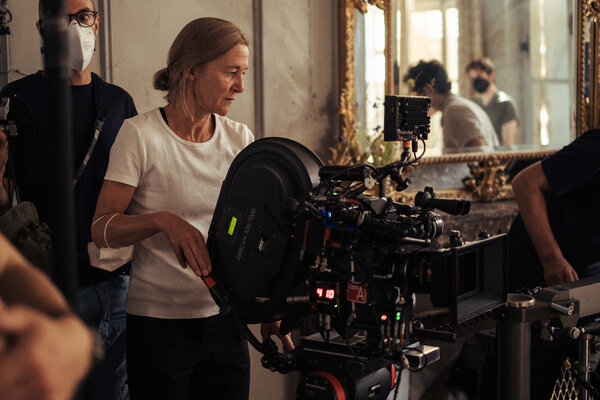
Let’s talk about the scene where the Empress sensually approaches her equerry...
JK: This scene is the culmination of the mutual attraction between the Empress and her riding partner, was originally written to be shot at dusk. With quite an extreme color temperature mix between light coming from the fireplace and the twilight coming from the windows. This was originally a long take where we follow her from her arrival in the room to the long face-to-face near the fireplace. As the sequence was shot in the middle of the day, my team had to adjust the amount of light coming through the windows by installing ND 2.4s, gradually removing them as the day went by. The fire was recreated with gaslights by the special effects team, but quickly we had to find a replacement solution because the updraft of the chimney was insufficient, and the room began to fill with dark smoke! In the end, we used LED projectors to fake the fire effect illuminating the two actors. I think our breaking the rule that we had set for ourselves of never putting candlelight in the film works quite well on this scene, with a great proximity between the two of them that comes across on screen. The viewer of course expects a very romantic first embrace and yet the scene turns into a subtext farewell scene when she says to him: “I like looking at you gazing at me.” It’s clear at that point that nothing is going to happen between them. This is also, in my opinion, one of the great lines in the film that perfectly summarizes the character of the Empress as Marie imagined her. I find it interesting to portray desire on the screen as an illusion that disappears almost immediately.
On the contrary, the breakfast scene with her cousin is very surgical...
JK: That’s quite a paradox because Ludwig is probably the person closest to her in the whole story. And yet, at that moment, he is pulling away from her. So, we imagined this sequence with the very large table and the rather cold lighting. Apart from the simple scenography, you may notice that the shots-reverse shots between them were done breaking the 180° line. They each look from right to left, which I feel reinforces the distance that has suddenly arisen between them. Again, a sort of farewell scene.
And the smoke? It’s still a useful element when shooting in castles, isn’t it?
JK: I feel that smoke is a bit too much, especially when shooting on film. The texture of the grain gives enough life to the image and adding smoke just seemed out of place. In addition, we never shot in a studio and controlling the level of smoke would have been a nightmare, especially given the high ceilings in the castles. Optically, I also wanted a certain precision, a certain sharpness that would be a counterpoint to the softness of the film. This is why I chose the Summilux series from Leica Cine. Now, shooting on film at 400 ISO requires regular use of large apertures in these conditions. In terms of focal lengths, it’s more of a fairly wide-angle film, where a lot of things are shot hand-held at 25mm or 29mm, close to the actors, in a sort of physical rapport with them. I had to be in tune with the sometimes-unpredictable behavior of our protagonist to preserve the feeling of movement that drives the film.
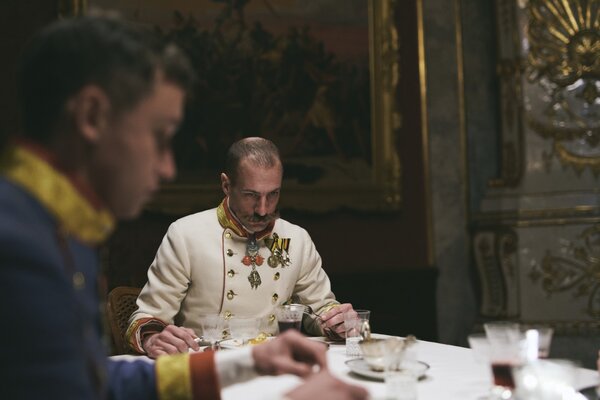
Deep down, do you prefer to light faces or sets?
JK: On this film, I really had to first light the sets and the spaces before I could even think about the faces. We didn’t know in advance where the actors were going to move, or how the space was going to be occupied by them. Of course, there are still some close-ups in the film that I was able to shoot in a slightly more "classic" way, but that wasn’t the main issue at stake. In the end, it made me realize that I enjoy lighting the space without really knowing precisely what is going to happen on camera. In a more classic form of cinema, with a lot of cuts, I sometimes find myself in a kind of routine, where you are basically too sure of yourself. Insecurity. That’s what makes me creative on set.
(Interview by François Reumont, for the AFC, translated from French by A. Baron-Raiffe)
 En
En
 Fr
Fr
